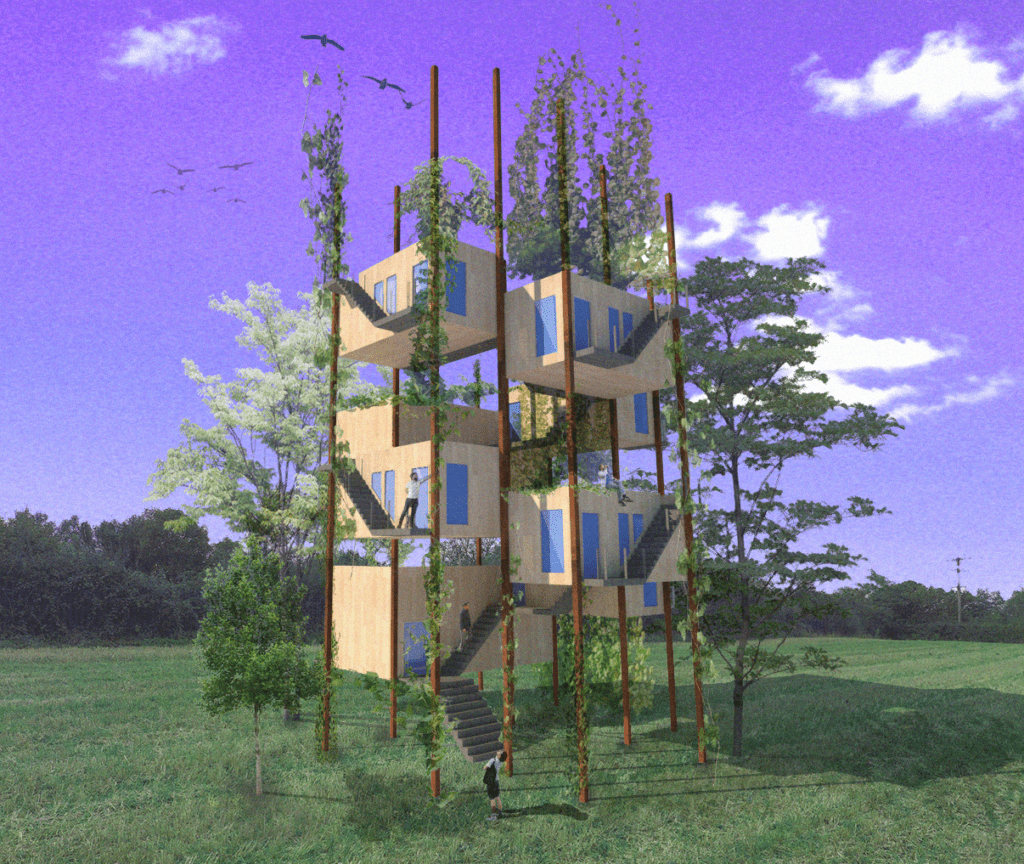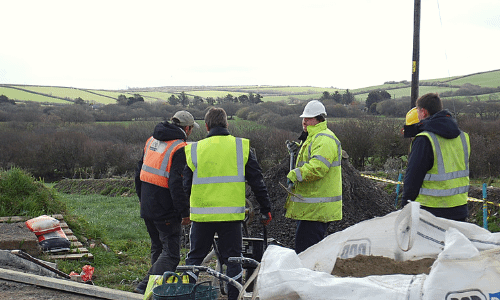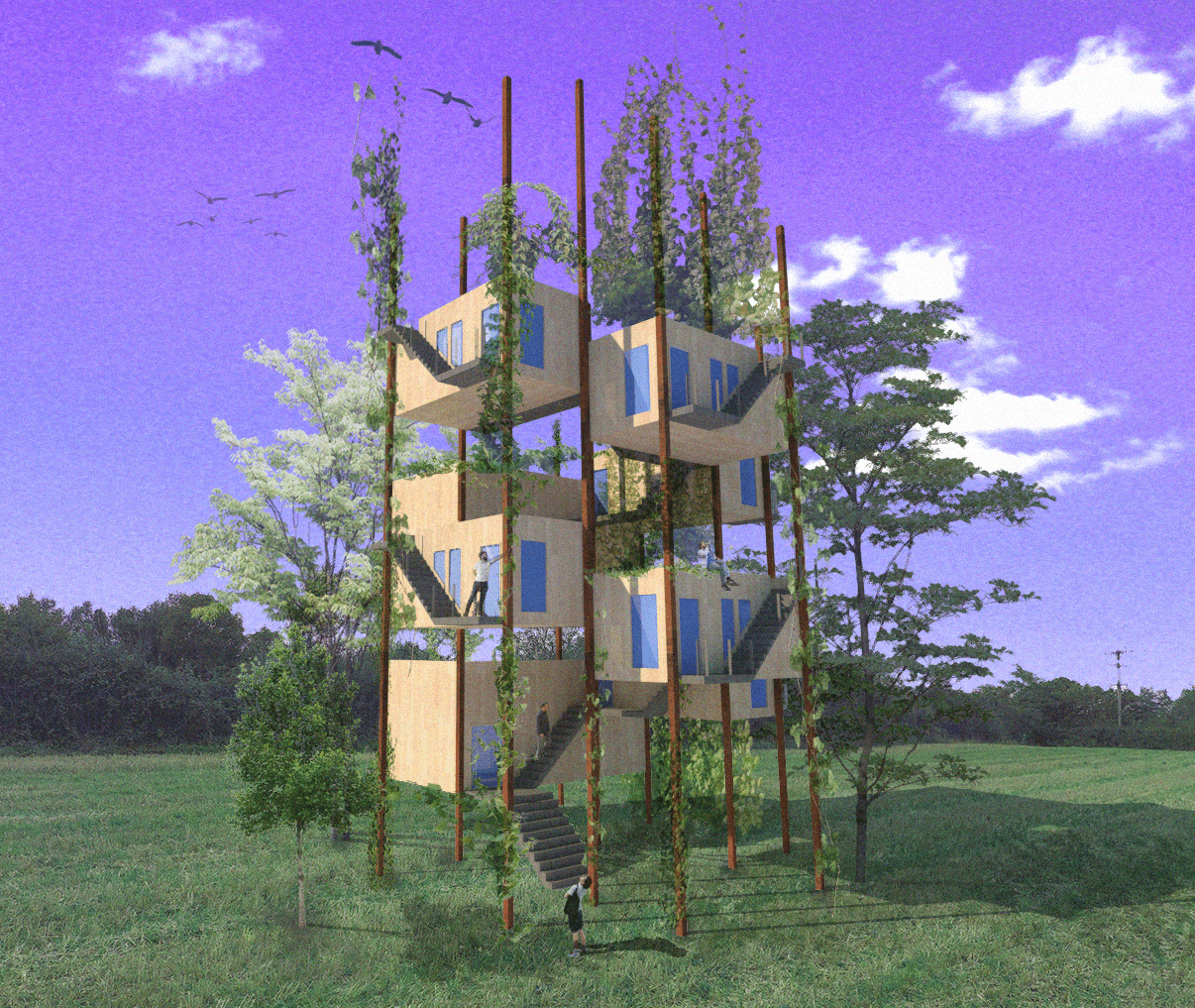Niall Davies-Hale – Part 1 Architectural Assistant
When Niall spent his summer holidays between years two and three of his architecture degree to work with us, we asked him to tell us what sustainability meant to him as a student of architecture. This is what he wrote:
From a student perspective, the climate crisis can seem quite daunting as there feels like a lot of responsibility to bring about change within the construction industry in order to reduce the effects of climate change.
I personally don’t believe that the design and construction industry needs a ground-breaking new material or technology to solve the climate crisis – I believe that a systemic change (or series of changes) in methods of practice will lead us towards a more sustainable future, with many small changes adding up to make a big difference.
My ideas on this can be narrowed down into four main concepts: conceptual sustainability, material choices, renewables and social impact.

Conceptual sustainability
Before even considering the sustainable aspects of a design, we must ask ourselves to what extent is the project actually necessary and how appropriate is the concept for the client’s requirements. This is something I think should be included at stage 0 of a project, and should be given equal importance by all stakeholders to initial factors like site and budget.
This could be implemented by simply asking ‘why?’.
Straight forward ideas like this could influence a positive change in the concept from the very beginning; after all the easiest way to increase sustainability of a build is to build less and to build smarter.
Material choices
Choosing to use sustainable materials is usually the go-to when discussing sustainability in construction, but this can sometimes lead to gimmicks and ‘tick-box’ solutions being applied.
The embodied carbon in a material is a big factor to consider, this is the amount of carbon generated from material to the product in use (e.g. manufacturing, transportation, etc.). Sometimes, a material that is seemingly very sustainable on the outside is actually not at all, from toxins/pollutants used in the manufacture through to large polluting cargo ships travelling thousands of miles to deliver them.
In most cases, the embodied carbon of a material is a much more suitable measure of sustainability than other factors such as component materials, manufacturing processes etc, and so we should be looking to reduce embodied carbon where possible.
Renewables
As technology has advanced over the years, renewable energy sources have become very popular and have proven to be much more efficient and effective than non-renewable sources.
The main argument against renewable energy systems on a domestic scale is of course the cost; however this should be discussed at stage 0 of a project as an expense that must be taken into account (e.g. X amount of your project will be spent on renewables).
I do believe in the idea that our national grid should be powered by renewable energy, allowing every building supplied to have a sustainable energy source. And as of last year this is becoming more of a reality, with the period between the 10th April and 16th June 2020 where Britain’s national grid was actually coal-free.
However it is achieved, renewables are the future and are a must in new build projects.
Social impact

Often overlooked, the social impact of a project is something I am very passionate about, and I believe it must also be considered in order for a project to truly be branded ‘sustainable’. I’m not suggesting that every new home should double up as a community centre by any means. It can be much easier than it seems to have a positive social impact.
Conceptually, yes there may be an aspect of a design that could benefit the local community in public buildings or landscape design, but there are many other ways in which a project can (and should) have a positive social impact.
This could be through:
-Enrichment days on site with schools and local charities.
-Work experience placements for students within the design team.
-Ethical material choices (Considering the brand’s reputation, how workersare treated etc.).
A great local example of this that I have personally experienced was during my time working on site a couple of years ago with Irebuild.
A day on site was arranged for the Exeter Chiefs Hitz programme, designed for 16-18 year olds not currently in education or work with aims to give them employability and life skills to go on into further education or employment. On site we taught students some basic skills, such as de-nailing reclaimed laths and planting trees. I taught students how to clean up and sand a large oak slab – which was later installed as a window sill in the house. In the afternoon we then went surfing and bodyboarding with the group, which was just as enriching for us as it was the students.

Experiences like these could lead to new opportunities or training programmes for the young people involved – which is something that can’t be quantified and is incomparable to the cost of one day out of a building program.
These four concepts are ideas that I have develped from my time both at university as a student, and on-site as an apprentice. My main belief is that to instigate change we must all take small steps towards working more sustainably in order to make a difference.
There is a lot of pressure on everyone involved in the construction industry at the moment when it comes to sustainability particularly designers. This can feel very overwhelming at times, but on the other hand we are being offered a great opportunity to make a difference to reduce the effects of climate change.

Written by Niall Davies-Hale (Instagram: @nialldavieshale)
Niall is a Part I architecture student who studied at Falmouth University, he is now enrolled in an apprenticeship course with Oxford Brookes University which will lead to qualification. In his spare time, he loves being outdoors either surfing, mountain biking, or playing rugby.

